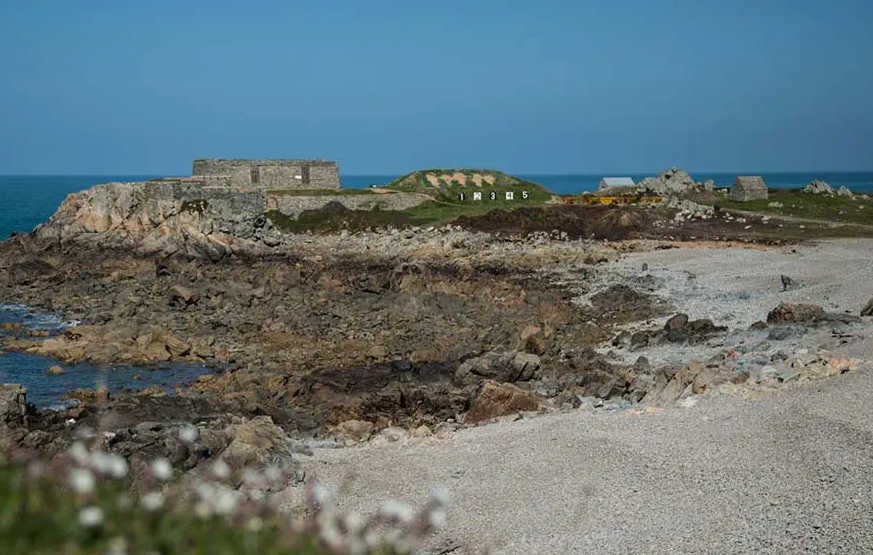Guernsey plane lands on car roof

Guernsey's oldest woman dies, aged 110
Margaret Anne Neve, who died this week in 1903, was the oldest person in Guernsey. More than that, at 110 (and 322 days) she was also the oldest in the British Isles, and perhaps the world.
She had lived her whole life in Guernsey, apart from a spell in Belgium where she’d attended school. The eldest of eight children, Neve was born Margaret Harvey, in St Peter Port, on 18 May 1792. William Pitt was prime minister and George III was on the throne. Through her life, she saw four other monarchs: George IV, William IV, Victoria and Edward VII.
She witnessed some of history’s most remarkable events, including the aftermath of the French Revolution and the Battle of Waterloo. This had come about as a result of her schooling. She’d been educated in Belgium, and visited the battlefield shortly after the fighting had come to an end.
The original Guernseyman was born
Stone de Croze, the so-called "original Guernseyman" first appeared in print this week in 1970. Drawn by Alan Guppy – better known simply as Guppy – the comic strip in which he appeared ran weekly in the Guernsey Evening Press and Star and were collected into compendiums.
Although Stone de Croze lived a fairly solitary existence, Guppy introduced other characters over the years. Some of these came from the neighbouring islands of Herm, Sark, Jersey and Alderney – along with the occasional mainlander. Alan Guppy, his creator, died in 1980.

Guernsey hosted its first Parkrun at Pembroke
Guernsey hosted its first Parkrun this week in 2016. Wherever it takes place, every Parkrun event is a 5km Saturday morning run. Guernsey’s own course is probably one of the most picturesque. Centred on Pembroke, it takes in the common and coastal footpaths, and expansive sea views.
Guernsey’s local runners were joined by Parkrun visitors from the mainland. In total, 102 participants gathered at the start line. Visitor Clayton Barrett from Medway completed the course in the shortest time. He crossed the finish line just three seconds shy of 19 minutes.
A German minefield is discovered at L'Ancresse
British bomb disposal experts spent most of Easter in 1958 investigating a field of teller mines uncovered at L'Ancresse. Containing around 5.5kg of TNT each, the teller mines were in many cases quite safe to walk on, but would explode if driven over. They made the ideal anti-tank measure, and would have disabled any Allied vehicles landing on the shallow north of the island.
The name teller comes from their shape: it’s the German word for plate. The mines were flat, with a pressure plate on the top requiring at least 90kg of pressure to activate. Each one had a handle on one side to make it easy to carry around and lay. The mine-clearing operation was wound up by 7 April. By then, the Royal Naval bomb disposal unit, which had been sent to Guernsey from Portsmouth, had uncovered and destroyed a total of seven mines.
Guernsey issued its first ever stamp
Guernsey issued its first ever stamp this week in 1941, when under German occupation and unable to get hold of British stamps. A solution to the shortage had to be found and on, 7 April 1941, the occupying powers issued Guernsey’s first ever locally-produced stamps. They had done the same in Jersey six days earlier.
The occupation stamps weren’t as picturesque as the ones we know today, and aside from the colour and value, they were identical. Each carried a shield bearing three crouching lions with the words “Guernsey” and “Postage” above and below. The half penny stamp was emerald green, and the full penny stamp, red. They were joined in 1944 by a two and a half pence stamp, which was ultramarine. The stamps were all designed by EW Vaudin and printed by the Guernsey Press.
Share the love
That's all for this week. Thanks for reading. Please forward this newsletter to a friend if you think they'd enjoy a weekly rundown of Guernsey goodness, and encourage them to subscribe.
If this is your first time receiving the newsletter, welcome! If you're not yet subscribed, sign up for a weekly update of what happened in Guernsey history.



